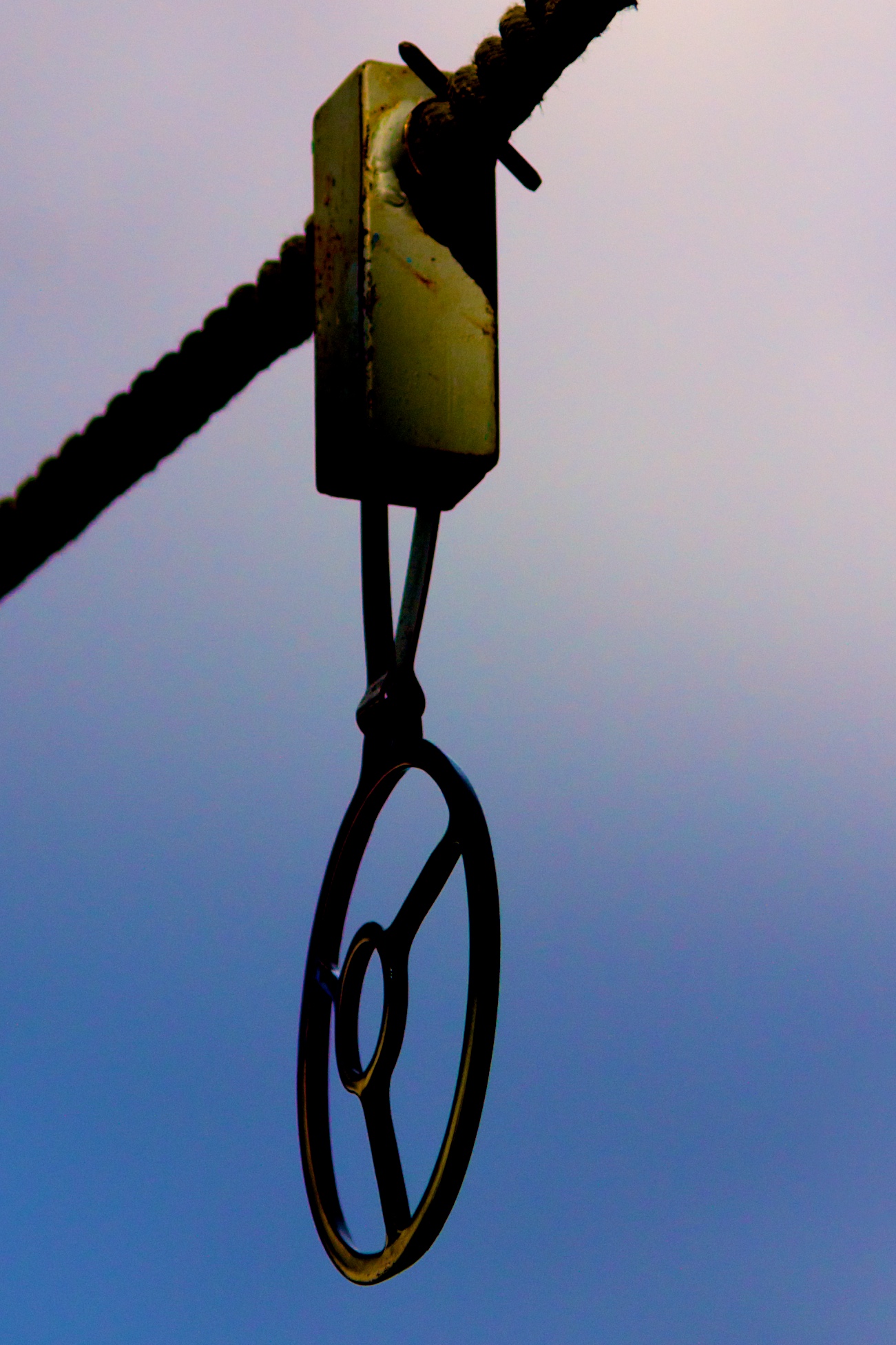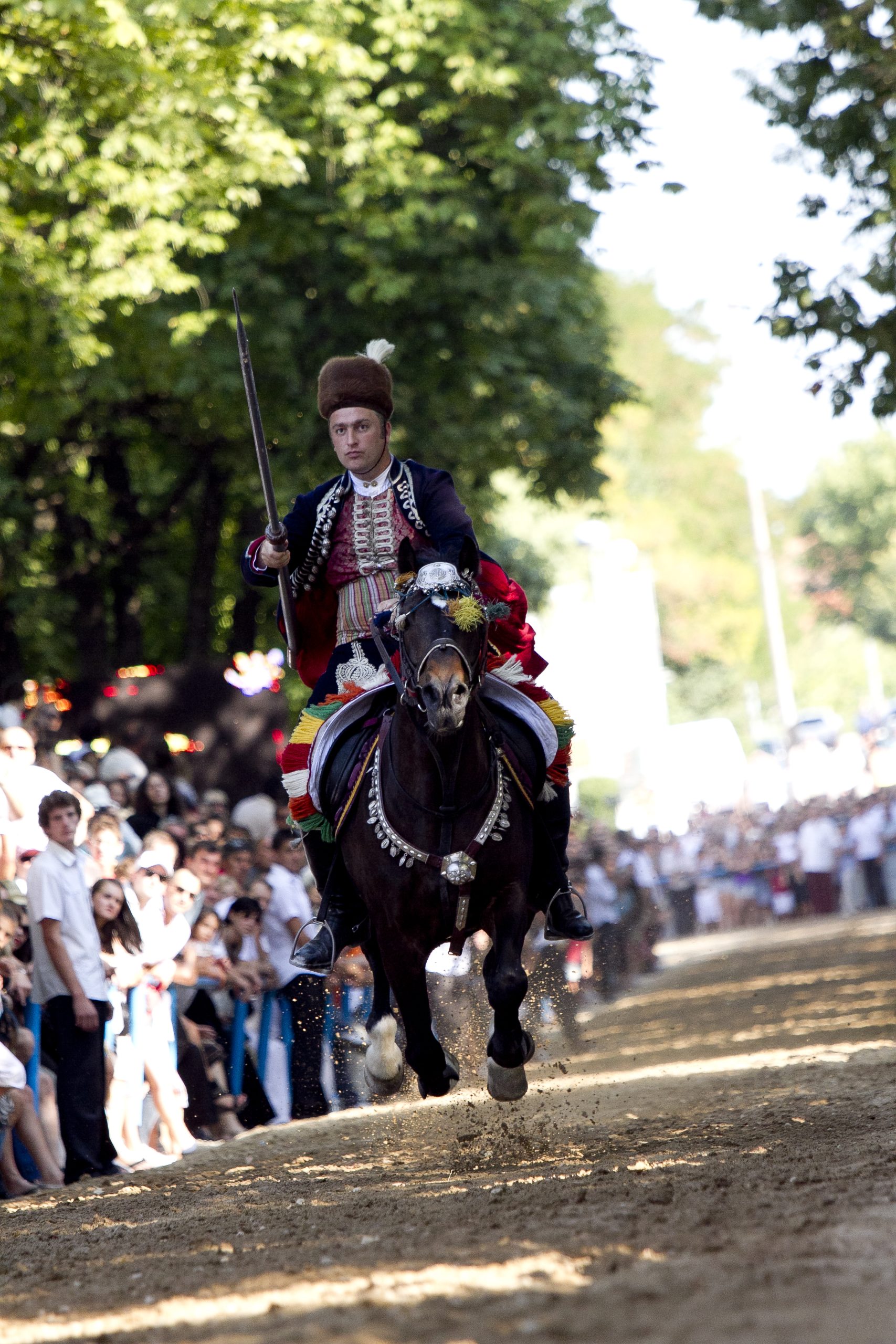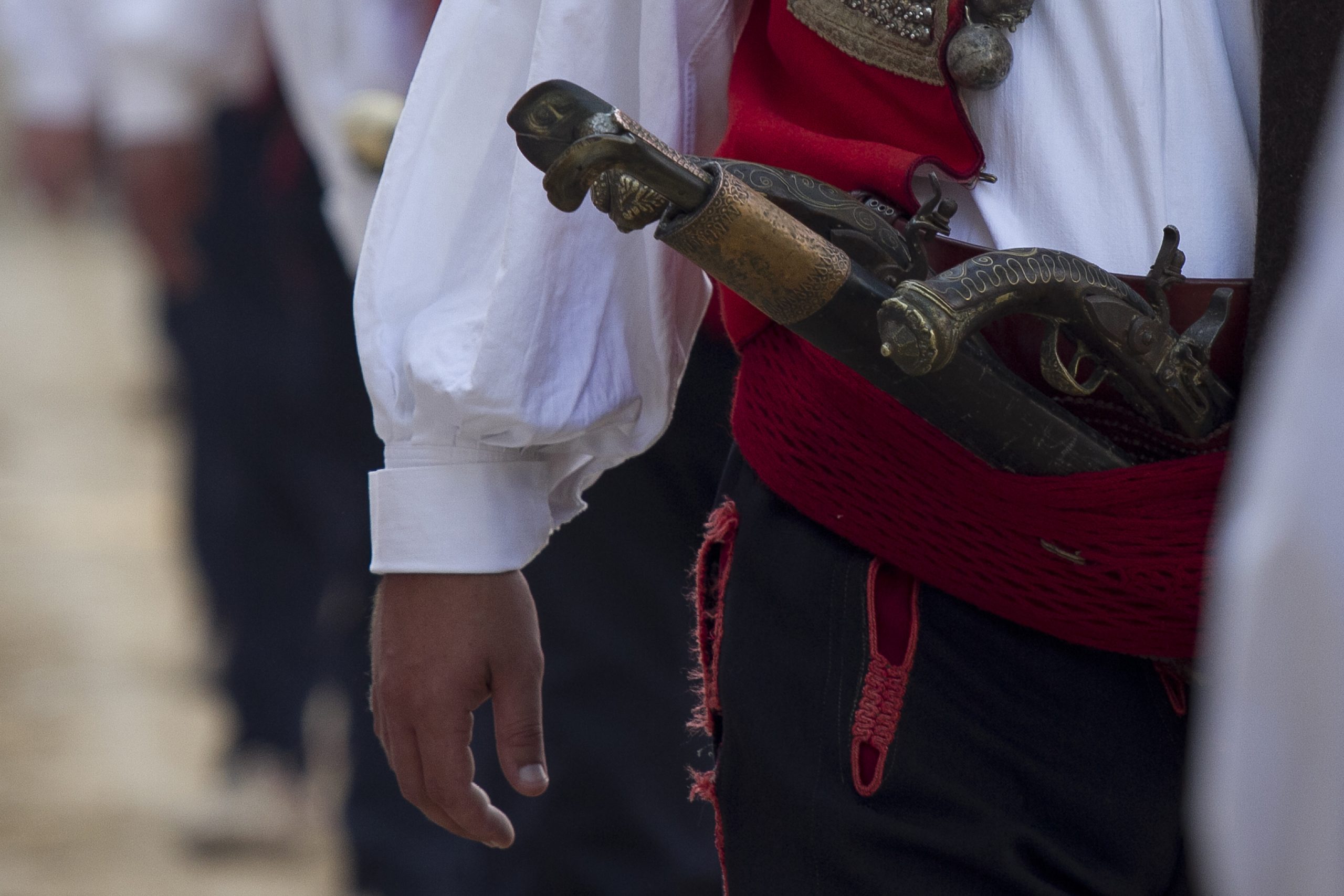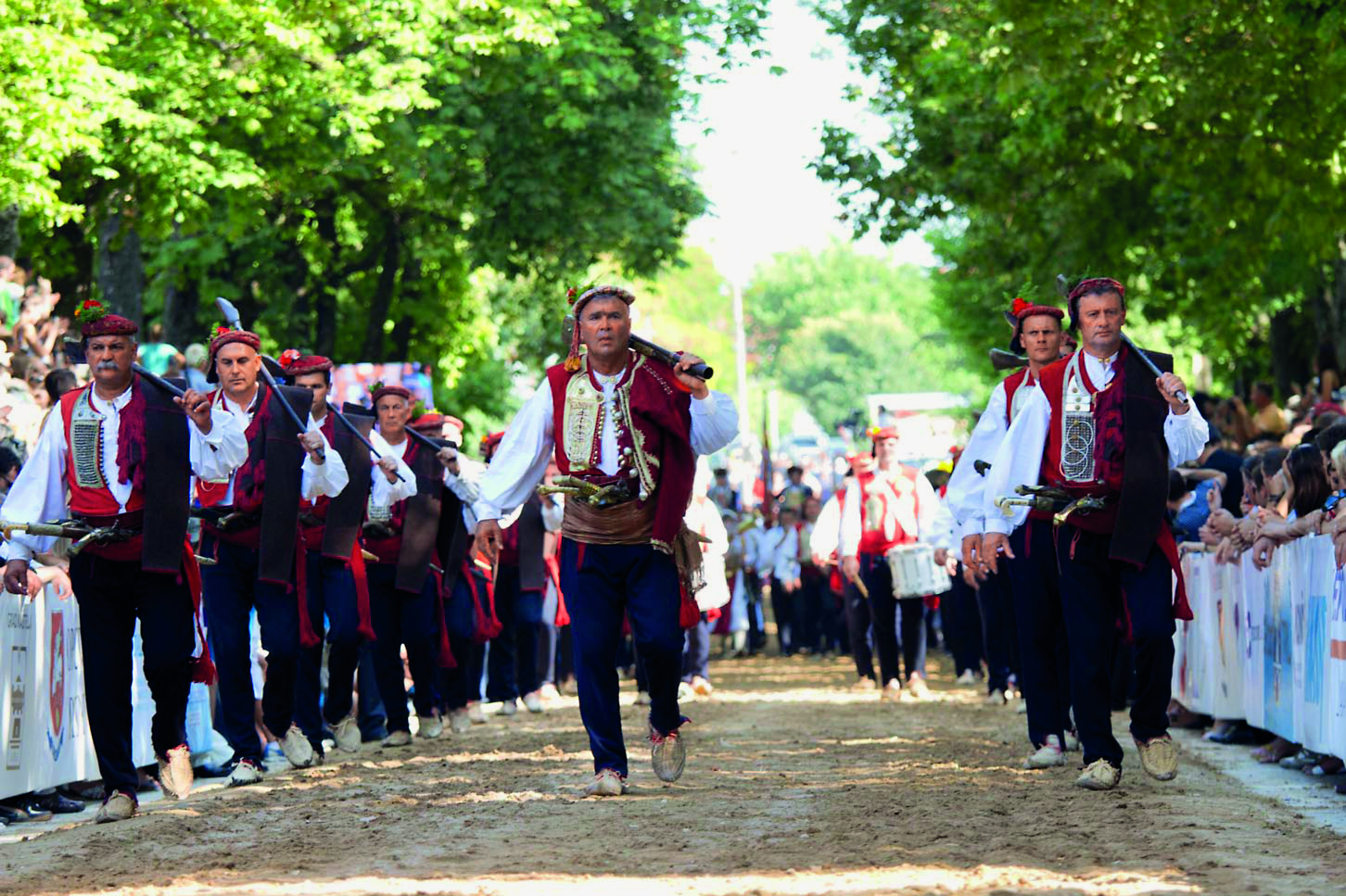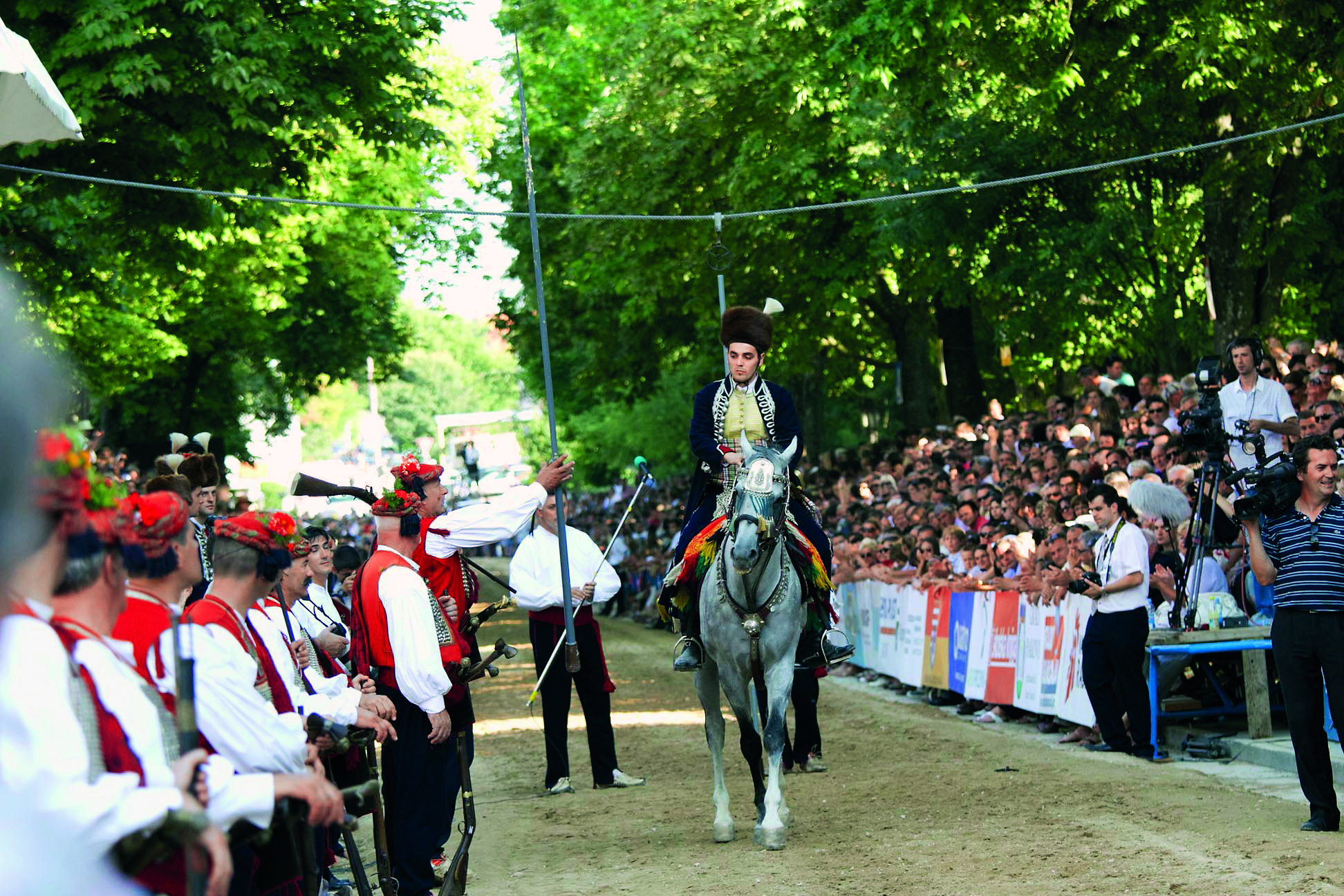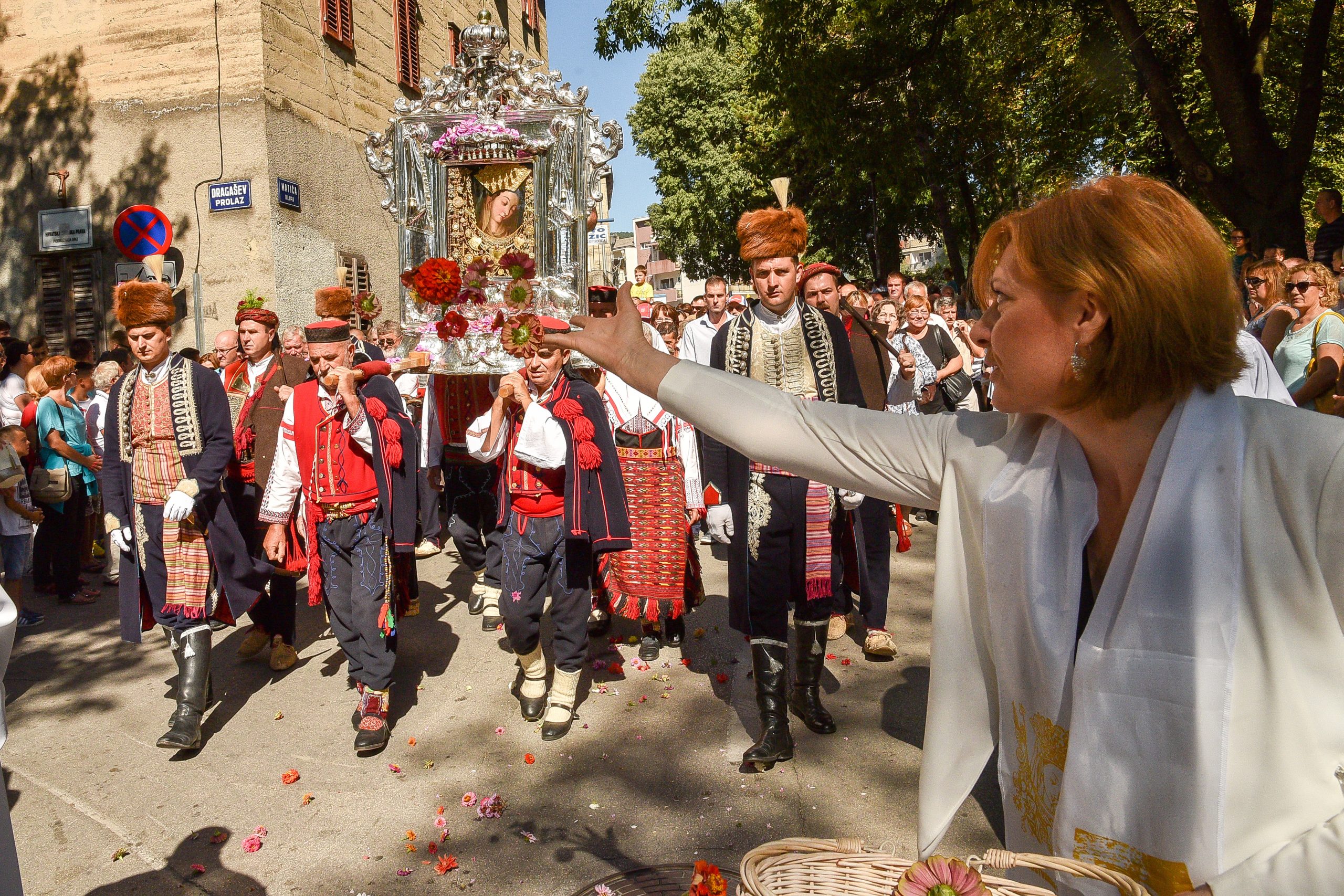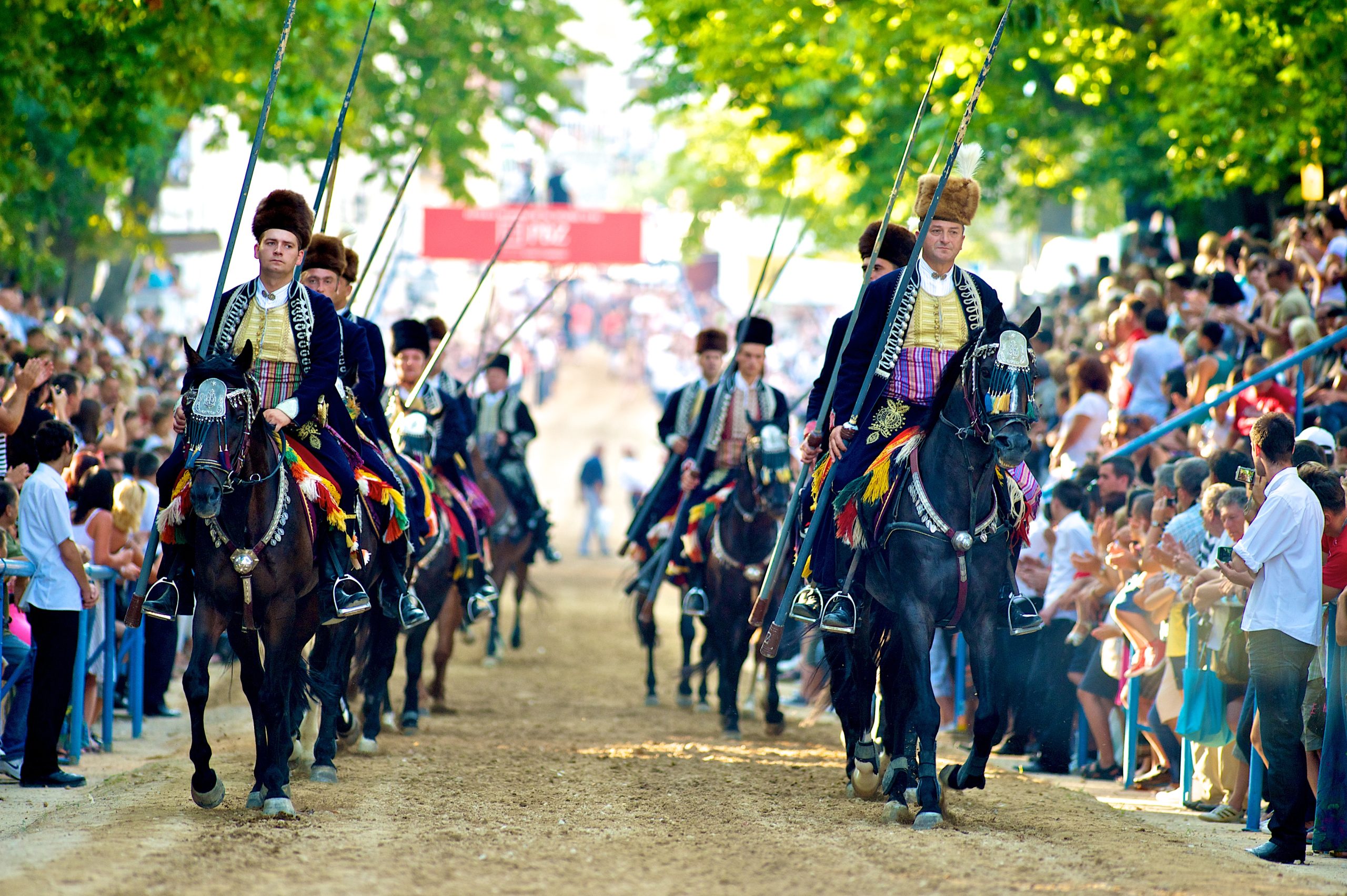Alka Tournament
VIEW ALL
For centuries Sinj has been a pearl each government wanted to adorn itself with, a boundary stone between the coast and the inland, surrounded by the nearby mountain peaks, the Cetina River and its tributaries. Although shaken by earthquakes, destroyed and burnt by conquerors, who imposed their foreign languages, religion and customs, the Town still grew stronger, unyielding and defiant. The renowned folk poet Father Andrija Kačić Miošić wrote a poem praising the 1715 grand victory over the Turks: ″The Town of Sinj, the mace of gold, / Heroic megdan from days of yore …″
In honour of its heavenly patroness the Madonna of Sinj, who, according to the tradition, forced the Turks into flight in 1715 (”a woman in white was seen, walking on the walls of Sinj”), as an eternal vow of devotion and respect, the people of Sinj instituted the Alka – the knights tournament of Sinj, and thus each year on the first Sunday in August the glorious victory is revived.
The name Alka (Tur./Arab. halqa: ring, hoop) is derived from the details of the stirrup bottom from the saddle of a horse, seized from the Ottoman serascher-pasha Čelić. In the Alka ceremony two men lead a horse by the reins, which symbolises the Pasha’s horse, the edek.
The ring, alka, consists of two concentric iron circles joined by three bars, so that the distance between the circles is divided into three equal parts. The central circle, which is the smallest one, is worth three points (punat), the upper field two points, and two lower fields one point each. The knight – the Alkar – aims at full gallop at the alka with an iron-topped wooden lance. The winner of the Alka is the one who wins the highest number of points (punti) in the three races. In the event that more contestants have the same number of points, they gallop again until one of them collects more points than other(s), and this is called pripetavanje.
The ceremony of Alka lasts for three days. The contest starts on Friday for the Bara, whereas the Saturday contest is called the Čoja. The solemn Sunday Alka Knights procession is led by the harambaša and the selected Alka squires (alkarski momci). They are followed by mace-bearers (buzdovandžije) and the trophy Turkish shield-bearer. At the rear of procession come the edek’s guides. The troop of Alkari, who ride double-rowed, is led by the standard-bearer (carrying the Alka Knights Tournament Society banner, accompanied by the Image of the Madonna of Sinj and Croatian three coloured flag) with henchmen and the Tournament Master (alkarski vojvoda), the commander of the procession, with his adjutant. At the rear of procession rides the commander of the Alkari, called alajčauš. The 11 Alkari at least, 15 of them at the most and exceptionally the 17 Alkari comprise the Alka procession.
The Alka squires march along in the procession, together with their leader (harambaša). The Alkari, dressed in the early 18th century authentic knights attire of Sinj defenders, ride richly decorated horses. On their right side, they are armed with a lance and a sabre.
An Alkar has to be born in the Cetinska Krajina Region, be hawk-eyed and have a strong right hand (oko sokolovo i čvrsta desnica). Above all, he has to be an honourable and honest man.
The Tournament of Alka originated at the time when there were many similar knightly tournaments throughout Europe. All of them have now fell into oblivion, except the Alka Tournament of Sinj, which is at the dawn of its tercentenary and under protection of UNESCO as world intangible heritage. The Alka Tournament is a symbol of the struggle for freedom, peace and hearth, for faith and hope. It unites the past and the future, praises the honour and integrity, the customs of our ancestors, heroism and bravery.


